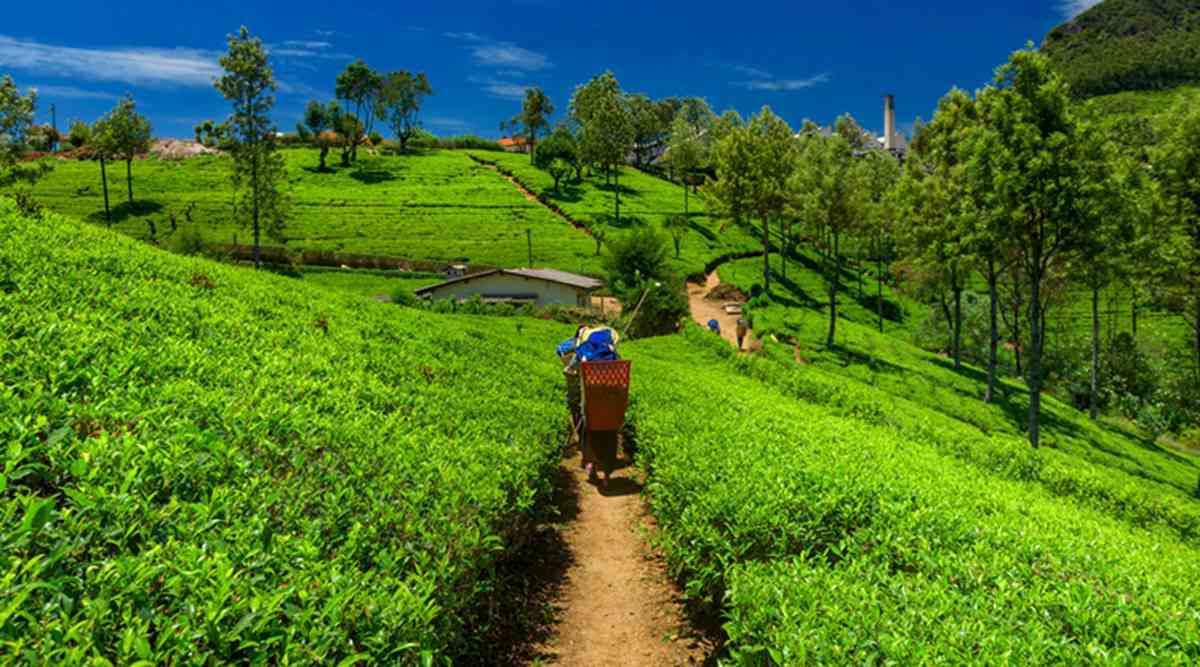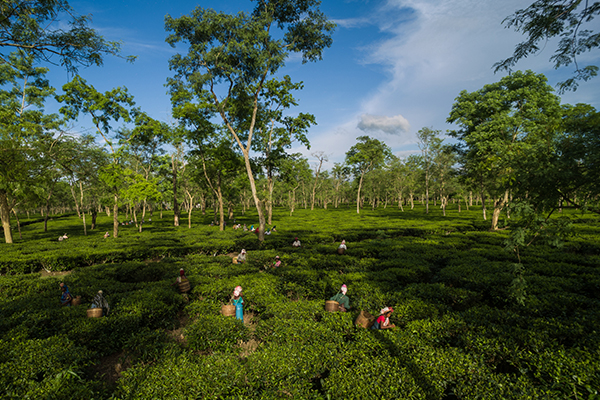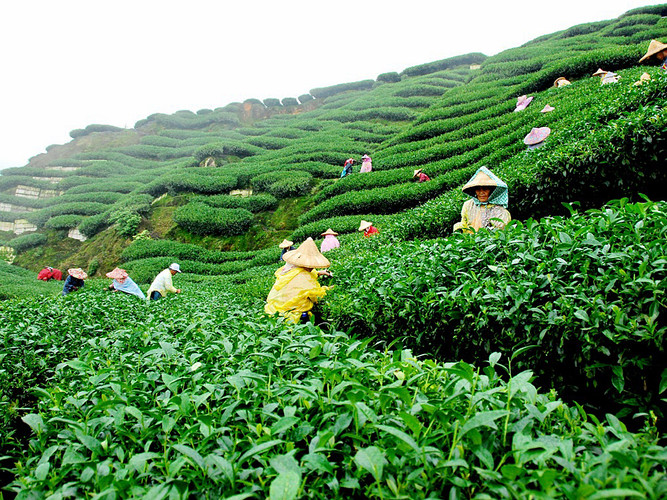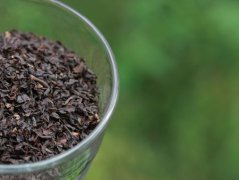What does the black tea variety look like? is the tea a kind of tea tree?
If you want to drink good black tea, you must first understand the tea tree, the origin, the tea-making process and so on.
First of all, let's get to know the tea tree.

It is not difficult to wonder why the tea tree looks so much like the row of plants in my downstairs park when I have seen some friends in tea house's tea field. Are they the same thing?
Hey! Take this idea first. If there are friends who want to make tea from shrubs in the park, this idea is too big to have!
Tea tree is an evergreen tree of the family Camellia, whose scientific name is Camellia sinensis (L.) Kuntze can be roughly divided into lobular variety and large leaf variety.
The leaf length of lobular variety is about 5cm to 8cm and the width is about 2cm to 4cm. The leaflet variety is mainly planted in the hilly areas of China, Japan, Taiwan and other places. The lobular variety is generally referred to as the Chinese species.
The leaf length of the large leaf variety is about 12cm to 20cm and the width is about 5cm to 10cm. The main planting areas are India, Myanmar, Sri Lanka, Kenya and other tropical areas. The big-leaf variety is often called Assam.
The earliest tea trees are said to inhabit the Yanshan area and steep valleys of Wuyi Mountain in China, which are difficult for human beings to enter.
Cultivation and tea picking
Tea plant, which has the gene of Camellia family, is a particularly strong and hardy species among evergreen trees and can survive in a variety of climates. But the growth time is longer. Many tea house tea gardens use cuttings to cultivate a large number of tea trees of the same quality.
[start with the seed]
When the tea tree is born in a place with four distinct seasons, a bud emerges in summer. After flowering for 30 days, the flower bears fruit, which ripens and falls to the ground after 7 to 8 months on the tree. To cultivate tea trees, you must pick up the fruit and bury it in the soil to wait for it to germinate.
After soaking the ① seeds for a day, select the sunken part. The seed epidermis softens and grows in soil at depths of 2 to 3cm.
After 40 to 50 days of ②, the seeds germinate and new buds emerge from the soil. At this time, it is necessary to reduce the amount of sunlight to protect the saplings from direct sunlight.

After 3 to 4 months of ③, the roots hold on to the soil and have enough strength to support the stem. There will also be 3 to 4 leaves and a height of about 20 to 30cm.
After 2 to 3 years of ④, the height of the tea plant is about 1 to 1.5 meters, forming a trunk with a diameter of about a few centimeters, and many new buds and leaves. Tea can be harvested at this stage.
⑤ tea trees will continue to grow to 4 to 5 meters high, so they need to be trimmed to 1 to 1.2 meters suitable for picking tea. Tea trees are usually built for the first time two years after sowing, and then overhauled every 3 to 4 years.
Suitable climate, soil and planting area
Wind, fog and light will stimulate the tea trees and affect the taste and aroma of the finished black tea.
The characteristics of tea are significantly different with the altitude, soil and climatic conditions of tea trees.
Tea trees need to be planted in areas with annual rainfall of more than 1500 mm, but it is not the more rainfall the better. It takes at least three to four months of dry season each year to promote its growth.

Tea trees need more than 5 hours of sunshine a day and shade the rest of the day.
Tea trees are suitable for planting in subtropics between 40 degrees north latitude and 30 degrees south latitude. But there are exceptions. As long as the altitude is high enough and the temperature is cool enough, even African countries below the equator can grow tea.
The fertile soil suitable for growing general vegetables, coffee and so on is not suitable for growing tea trees. Tea tree is suitable for weak acid soil of 4.4 to 4.5, and it is a dry geology with good drainage.
Important Notice :
前街咖啡 FrontStreet Coffee has moved to new addredd:
FrontStreet Coffee Address: 315,Donghua East Road,GuangZhou
Tel:020 38364473
- Prev

What is the difference between black tea and green tea? what is black tea? what is the difference between black tea and green tea?
Have you ever seriously thought about what black tea is? I believe you have drunk a lot of black tea, including black tea with strong aroma, black tea with distinctive and astringent taste, and light tea as light as water. But the black tea bar that everyone drinks most is also the most common tea bag brewing in the supermarket. I don't know if the friends in front of the screen know that the black tea ingredients that form brown color to the human body.
- Next

What is the best black tea distribution in India? which is better, ctc black tea or original leaf tea?
Tea and coffee are both agricultural products, which means that tea, like coffee, pays attention to the flavor of the producing area. Coffee is grown in more than 70 countries between the Tropic of Cancer and the Tropic of Cancer. And tea is not limited to death in the gold belt like coffee, but it is still a lot. Next, let's introduce India, the largest producer of black tea.
Related
- Beginners will see the "Coffee pull flower" guide!
- What is the difference between ice blog purified milk and ordinary milk coffee?
- Why is the Philippines the largest producer of crops in Liberia?
- For coffee extraction, should the fine powder be retained?
- How does extracted espresso fill pressed powder? How much strength does it take to press the powder?
- How to make jasmine cold extract coffee? Is the jasmine + latte good?
- Will this little toy really make the coffee taste better? How does Lily Drip affect coffee extraction?
- Will the action of slapping the filter cup also affect coffee extraction?
- What's the difference between powder-to-water ratio and powder-to-liquid ratio?
- What is the Ethiopian local species? What does it have to do with Heirloom native species?

